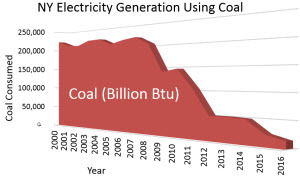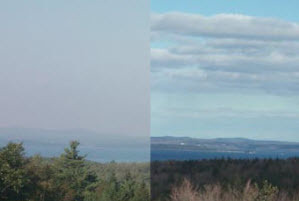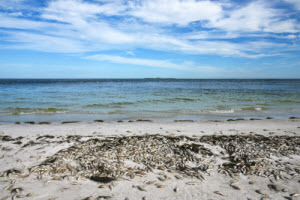Cleaner Power, Haze Days are Numbered - Air Mail! Newsletter
The New York State Department of Environmental Conservation sent this bulletin on 06/19/2019 12:02 PM EDT |
| DEC Delivers - Information to keep you connected and informed from the NYS Department of Environmental Conservation |
| Share or view as a web page || Update preferences or unsubscribe |
This Month’s Topics: |
Public & Stakeholder Participation Information:
Additional information and access to past announcements are on our Public & Stakeholder Participation Information page. Air Mail! is the publication to announce public and stakeholder information about air quality topics. All NYS residents are environmental stakeholders – we welcome anyone to join the information sessions and other opportunities posted here. Say Hello to Cleaner Air and Cleaner PowerLast month, Governor Cuomo announced amendments to power plant emissions standards. These amendments, which limit carbon dioxide emissions from fossil fuel-fired electric generating facilities, will help the State achieve its goal of phasing coal out of the power sector by 2020.
Coal is the least efficient fossil fuel because it burns incompletely. Burning coal emits large amounts of carbon dioxide and methane - powerful greenhouse gases that contribute to climate change. It also releases nitrogen oxides and sulfur dioxide, which contribute to smog and acid rain. Additionally, burning coal releases mercury, other heavy metals, and particulate matter into the air. All these pollutants are detrimental to people, pets, wildlife, and overall environmental health. New York has been a leader in air quality and continues to be one by adopting these first-in-the-nation standards. As of 2016, approximately half of our power grid is supplied with energy from renewable sources, including nuclear, biomass, hydro, wind, and solar, and that number continues to grow. New York continues to take steps in the right direction to clean our air and environment by transitioning to a greener power supply. Enjoying the View: Regional Haze
One of the most basic forms of air pollution - haze - degrades visibility in many scenic areas in the United States, including the Northeast. Particulate matter, especially fine particulate matter, sulfur dioxide, and nitrogen oxides, are the primary contributors to reductions in visibility. Haze is caused when sunlight is scattered and reflected by these tiny pollution particles in the air thereby reducing the clarity and colors of what we see and the overall quality of the air. DEC developed New York’s first Regional Haze plan in 2010 and will soon circulate an updated, comprehensive plan for public comment that documents progress made to date. It will also provide details of future programs that will be implemented to improve air quality in downwind National Parks, forests, and wilderness areas. The goal of the haze program is to provide unobstructed views through a reduction in air pollution. We have already made great strides toward reaching this goal. In the mid-1990s, visibility was consistently less than 10 miles on very hot, humid summer days. Now, we often see visibilities of 25 miles or more during similar weather conditions. For the sake of our air and vistas, keep doing your part every day to keep our air clean at home and on the go. To limit your exposure to haze pollution, check the AQI before you go outside. Keep an eye out for updates on the Regional Haze plan in upcoming issues of Air Mail! Photo caption: Side-by-side comparison of a continuous vista showing a hazy, high ozone day with less than 30 mile visibility (left) versus a clear day with 200 mile visibility (right). Photo credit: Camnet real-time air pollution & visibility monitoring haze cams. Photos were taken in 1999 by haze cams located on the Schoodic Peninsula, viewing Acadia National Park, Maine. Nitrogen Pollution: Too Much of a Good Thing
When air and water meet, such as when it rains, air pollution can easily turn into water pollution. Our oceans can receive a lot of pollution this way, especially along the coastline from both rain and run-off. Air pollution damages fragile aquatic ecosystems, with one of the most harmful pollutants being nitrogen. Although nitrogen is a vital nutrient for aquatic plants, too much of it does more harm than good. Emissions from burning fossil fuels are one of the main sources of atmospheric nitrogen pollution that can end up in our water. An overabundance of nitrogen in aquatic ecosystems leads to an increase in harmful algal blooms (HABs). In addition to reducing oxygen in the waterways, these blooms also produce dangerous toxins that poison fish and other aquatic life ultimately leading to habitat damage and loss. Although World Oceans Day was June 8th, you can still help reduce the effects of fossil fuel emissions on our water by greening your commute and conserving energy. Check out DEC’s website for other ways you can help keep air pollution out of our water. While you’re there, you can also read up on HABs and visit the new HAB mapping system developed to track HABs in inland waters. Photo Caption: Harmful algal blooms caused by an overabundance of nitrogen in the water can trigger large fish die-offs. Dates to Remember:
Stay Informed about Your Air QualityNew York's ozone season runs from April through September. DEC publishes ground-level ozone forecasts during ozone season, and particulate matter pollution forecasts year-round using a scale called the Air Quality Index (AQI). DEC sends out an air quality alert when there is a high AQI value, which indicates polluted air. Individuals with pre-existing respiratory or cardiovascular conditions, and people who exercise outdoors should take caution during an air quality alert. Find out if an Air Quality Alert is in effect by calling the toll-free Ozone Hotline: 1-800-535-1345. The AQI can be accessed in three ways:
We would like to know what you think. Please send your Air Mail! questions or comments to us at DAR.web@dec.ny.gov. |

 Public & Stakeholder Participation Information
Public & Stakeholder Participation Information Historically, coal was the main fuel source for electric generation in the U.S. because it was inexpensive and abundant. It wasn’t until the 2000s when coal started to be left behind in favor of other fuel sources. This was a result of stricter environmental standards and the availability of cleaner, more efficient, and cheaper fuels. In one instance, the Eastman Kodak Company used up to 706,107 tons of coal annually at peak production in 1998 to power its business park alone. In 2017, the Kodak business park, now operating as RED-Rochester, completed their conversion to natural gas, thus ending 100 years of coal use for power generation at the facility.
Historically, coal was the main fuel source for electric generation in the U.S. because it was inexpensive and abundant. It wasn’t until the 2000s when coal started to be left behind in favor of other fuel sources. This was a result of stricter environmental standards and the availability of cleaner, more efficient, and cheaper fuels. In one instance, the Eastman Kodak Company used up to 706,107 tons of coal annually at peak production in 1998 to power its business park alone. In 2017, the Kodak business park, now operating as RED-Rochester, completed their conversion to natural gas, thus ending 100 years of coal use for power generation at the facility. 
